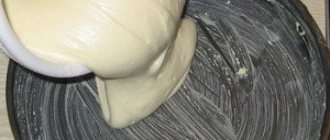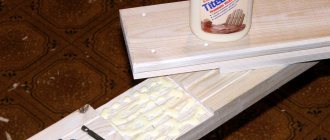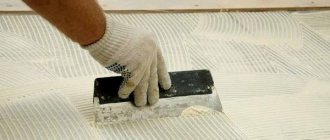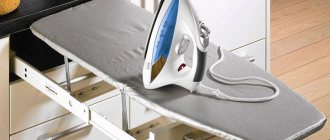How to wind flax on a pipe with your own hands: step-by-step instructions + Photo.
In everyday life, it is very often necessary to carry out small repair work, during which it is necessary to use flax for winding pipes. This may be required for a radiator or plumbing. Every master should be able to use tow correctly, as sooner or later he will need it. Water pipes can be made of plastic, metal, nylon or metal-plastic. Each type of material has its own adapters in order to connect to other pipes. We will talk about such connections.
What is sanitary flax made from?
Plumbing flax is a fiber obtained from the stem of flax, hemp , and other bast crops. The plants from which the seal is made only affect the color of the tow, but not the quality. Color can vary from pale gray to various shades of brown. Despite the different plants for the production of tow, the name of the material does not change; it is still plumbing flax. At its core, it is waste from the primary processing of these crops.
Advantages of sanitary flax
- Low price .
- Equally effective for any diameter .
- Equally effective for connections made of almost any material (aluminum fittings and fittings for metal-plastic require increased care due to the fragility of the materials).
- Can be used when installing heating systems .
- It is possible to adjust (loosen the connection) by 180° without the risk of leakage.
- It is environmentally friendly product.
- Plumbing linen is able to expand upon contact with water, filling more tightly the space between the parts.
- Vibration resistant.
- Resistant to temperature changes.
- Can be used for hot and cold, for indoor and outdoor water supply, drinking water supply is no exception.
- Used for sealing gas pipelines.
Disadvantages of sanitary flax
- Working with plumbing flax requires a certain skill.
- Useless without plumbing paste.
- During work, your hands and surfaces get dirty with plumbing paste.
- Prone to rotting.
Disadvantages, negative points
Despite the large number of advantages, natural sealant is not without its disadvantages. They are especially obvious when installation and repair technology is violated. After short-term use, rust may form at the joints, making it difficult to dismantle structures during subsequent repairs. In view of this, it is recommended to regularly inspect connections for leaks and take measures to eliminate damage.
The material is very sensitive to the quality of work, so it is recommended to use it only by experienced craftsmen.
Attractive physical properties are compensated by the low chemical sensitivity of the material. Thus, flax fibers will be destroyed under the influence of antifreeze if they are part of the mixture passing through connected communications.
Characteristics of sanitary flax
- Use temperature up to 140 °C.
- A good quality seal has no rotten smell.
- Humidity should be no more than 12% (it should feel dry to the touch).
- Available in the form of braids, coils or bobbins.
- Under certain conditions, withstands pressure up to 16 atm ( see below Insoluble sanitary paste).
Plumbing flax differs from each other in the content of the flax , it is combed and torn flax (the flax is the waste that remains after primary processing, essentially garbage). The amount of fire content in the compactor is indicated by numbers from 8 to 24. The higher the numerical value, the lower the fire content in the material.
Combed sanitary flax
These are purified, thin and long fibers intended for sealing gas and water pipes. Thin and long fibers tightly fill the threads, thereby making the connection reliable. Well suited for gas lines and thin threads.
Frayed sanitary linen
Torn flax is the raw material for the production of combed flax. For torn flax, a large amount of fire is the norm. For this reason, torn flax is best used for large diameter cast iron joints.
Preparatory stage
Before winding flax or tow on the thread, you need to prepare the joint surface and determine the required amount of tow. Screw the fitting onto the thread as is, without wrapping anything. This will help determine how much tow you will need to take.
If the thread is smooth and even (in the case of factory threading, most likely this will be the case), it is recommended to apply notches on the threads for better adhesion. For this, a water wrench, a triangular socket or regular pliers are suitable; all you need to do is apply notches across the thread, without being too zealous. This is done in order to prevent the tow from sliding along the threads.
The notches should not be too deep; you do not need to literally pierce the metal (watch the video). The reliability of the connection in the future will depend on how the tow is wound correctly. If you put too little and rarely, it will leak, but too much can be much more dangerous - a wound area that is wrapped too tightly can burst when the temperature rises (as you know, metal expands when heated).
Loading …
How to properly wind plumbing linen
This is what the finished thread should look like.
- The first step is to determine the direction of the thread , left or right thread. The right one is the one that twists clockwise.
- If there are no notches on the threads , carefully, so as not to damage the threads, make notches using a needle file , an adjustable wrench, or any metal object. This is necessary so that when screwing the thread, the tow does not rotate with the fitting, but holds on to the notches.
- Apply a thin layer ; many plumbers do not do this, but this procedure will not be superfluous.
- From the total volume of the seal, it is necessary to separate an even , non-tangled strand , about 30-35 cm long for threads with a diameter of up to one inch. The excess can then be cut off with a knife.
- Plumbing linen must be wound in one single strand .
- The flax strand must be straightened to form something like a ribbon 2-3 mm wide.
- Press one end of the strand at the base of the thread with your finger
- Wind in the direction of the thread , i.e. clockwise for right-hand threads.
- The linen strand should be laid tightly , turn to turn.
- If necessary, go over the entire thread surface one more time.
- The thread must be completely covered with plumbing linen.
- At the end of winding, the entire surface of the thread should be rolled between your fingers to tighten the flax.
- Treat with a thin layer of plumbing paste.
How to wind plumbing flax (video)
Additional benefits
Before you wrap flax on threads, you should know that it swells as it absorbs moisture. This allows you to increase the tightness, because the leakage has no paths. The mechanical stability of the material is quite high; it is this characteristic that makes it possible to adjust plumbing fixtures without losing the hermetic properties; connections can be unscrewed a full turn or half a turn.
How can you lubricate plumbing linen?
Before the advent of plumbing paste, red lead paint mixed with drying oil, oil paint, and silicone were used. Many people still use this method of compaction to this day. However, these methods have significant drawbacks.
Plumbing linen and paint
Advantage:
- The connection is sealed efficiently.
- Protects threads from corrosion.
Flaws:
- After the paint has dried, it is extremely difficult to disassemble such a connection.
- Very dirty work and not neat appearance of the connection.
Plumbing linen and silicone
Advantage
- Available material.
- High-quality seals the connection.
- Allows you to adjust the connection.
Flaws
- Due to the presence of acetic acid in its composition (a strong smell of vinegar appears during operation), it is not permissible to use it on metal pipes, since acetic acid causes metal corrosion.
How hard to tighten
It is impossible to give any numbers here, because tightening is done by hand. On the one hand, the stronger the better, but you should remember the fragility of the parts being connected. Modern plumbing components are rather weak compared to Soviet ones. Often, when over-tightened, a part with an internal thread breaks. Even if everything worked out well and the parts are intact, strong stress can manifest itself later in the form of a crack on the tee and a leak.
By eye, the optimal tightening can be considered a little tighter than if the parts were tightened with bare hands. In general, you need to learn to feel the material.
After twisting, the paste that has come out is removed with your finger. The result is a neat connection, without flax fibers sticking out in all directions. That's all science!
Plumbing paste for flax
Plumbing flax is practically ineffective without sanitary paste . The paste can be water-soluble or insoluble, gray or dark green in color.
- Protects threaded connections from corrosion.
- Extends the service life of sanitary tow.
- Due to its lubricating properties, it ensures tighter screwing of fittings.
- Over time, the connection does not stick, which makes it possible to easily dismantle the plumbing unit.
- Has a long shelf life.
Insoluble sanitary paste
Insoluble paste can be used even with low system pressure, in cases where it is not possible to completely shut off the water supply. In other words, a threaded connection can be inspected using a wet thread under low pressure.
- Operating temperature depending on the manufacturer from - 20°C to + 130°C
- Pressure withstands: For natural gas in gas supply systems and household bottled gas—up to 5 atm, at temperatures from -20°C to +70°C. For heating - up to 5 atm at +130°C. For drinking water -16 atm at temperatures up to 85°C.
- Melting point 180°C
- Ignition temperature 350°C
Soluble sanitary paste
The soluble paste has the following characteristics:
- Temperature maximum 140 °C.
- To work with soluble paste, the working surface of the thread must be dry.
- Operating pressure, depending on the manufacturer, is within 16 atm.
The composition of sanitary paste includes only those components that are not prohibited for use in the food industry, so they can be used, including for drinking water supply.
Paste composition:
- Water.
- Fatty acid.
- Paraffin oils.
- Natural natural minerals and various components.
- Graphite.
- Chalk.
- Talc.
The composition may vary slightly between different manufacturers.
Technical paste for flax
On the market you can find various pastes and mastics for sealing the threads of pipelines transporting oil, gasoline, diesel fuel, and various petroleum products.
All technical characteristics and recommendations for use are indicated on the packaging.
Precautionary measures
- It is not recommended to wind the seal using two or more pieces - this will compromise the tightness and strength of the connection.
- The tape on the thread should not be partially unwound, since if it is applied again, the connection will lose reliability. If winding is unsuccessful, the material should be removed completely and the process repeated.
- If, when connecting the elements, too much tension is created, which can lead to breakage, the tape will not be loosened. In this case, you also need to apply the seal again, removing the old section.
FUM tape is a material that is sufficiently reliable when sealing threaded connections. Its correct use will ensure the tightness of any pipeline even for a person who does not have extensive experience in plumbing work.
Plumbing flax or FUM tape
The table shows comparative characteristics of sanitary flax and FUM tape .
Comparative characteristics of sanitary flax and FUM tape.
Useful tips
Around the wound flax it is necessary to treat it with a special paste intended for plumbing or use any other sealing material, the application of which should be carried out in a circular motion. This procedure must be carried out as carefully as possible. The second end should be glued closer to the edge of the thread and before tightening it is necessary to check whether the pipe lumen is filled with sealing material.
Important! Organic tow cannot be used for gas connections, since under the influence of gas it, together with the additionally used silicone, will be destroyed. For this task, the best option is fum tape.
Plumbing flax or plumbing thread
The table presents comparative characteristics of sanitary flax and sanitary thread.
Comparative characteristics of plumbing flax and sanitary thread.
A little history
The material from which the tape is made was accidentally discovered by American engineer Roy J. Plunkett in 1938, while working for DuPont. It was registered under the Teflon trademark.
By 1948, more than 900 tons of fluoroplastic were produced. It was used at a uranium enrichment plant to insulate valves and joints in pipes. In 1954 they began to use it “for peaceful purposes.” The first Teflon-coated pans appeared (Tefal brand).
And in 1969, Robert Gore joined the research. He worked for W. L. Gore & Associates, owned by his father. The company received an order to create a new composition for plumbing purposes. Experiments began.
It took Robert a long time to make a thin elastic tape from a PTFE bundle - it broke. But Gore Jr. did not give up. He stretched the tourniquet in various ways. One of them (stretching with a jerk) gave an unexpected result. PTFE expanded 8 times to form a finely porous structure consisting of 70% air.
Thanks to this invention, not only FUM appeared in our lives, but also waterproof fabrics for clothing, sports shoes, medical implants and waterproof laminate.
Plumbing flax or anaerobic sealant
The table shows the comparative characteristics of sanitary flax and anaerobic sealant.
Comparative characteristics of sanitary flax and anaerobic sealant.
Processing agents
Some special compounds may complicate the dismantling of connections, the need for which arises when a leak occurs, when connecting new elements, or when replacing certain parts. Paint and silicone contribute to the gluing of elements and, as a result, difficulty in separation, in some cases it becomes impossible. In the absence of accompanying means or improper winding, similar problems appear on steel parts caused by the occurrence of corrosion damage at the connection.
Linen tow should be wound only in accordance with established rules. To begin with, it is treated with a suitable product, and the thread for it is also prepared. The winding direction should follow the thread turns. Then the remaining part is taken out beyond its limits and stretched, at this time the connection is screwed on and tightened. How much flax should I wrap on the thread? This can be determined by the tightness of the fitting being screwed onto it.
Manufacturers of sanitary flax
Russia
- MasterProf. Ordinary sanitary linen made in Russia.
- Remsan. The Russian company produces not only seals, but also heating systems and components for them.
- Uniflax. It has been producing linen products, including sanitary linen, since 2001.
Europe
- Unipak. A very popular and high-quality manufacturer of thread seals from Denmark.
- Unigarn. In principle, the same as Unipak, from the same manufacturer.
- UNI-FITT. Italian sanitary tow, like Unipak, is in great demand.
China
- No name. Chinese sanitary ware at a very affordable price.
Scope of application
Anaerobic sealants were invented in the fifties of the last century in the USA and were initially used only in industrial areas. Later they came to the USSR, and with the decline of the industrial complex, sealant manufacturers tried to popularize their products and find new uses for them. This is how anaerobic gels and pastes migrated to construction.
Initially, it was forbidden to use them when sealing water pipes, since it was believed that their contact with water would poison it, and the water would not be drinkable in the future. However, subsequent studies have shown that the compounds used in anaerobic fixatives are completely safe.
Currently, thread sealants are used in several areas.
Water supply. Using anaerobic gel, water pipes in apartments and houses are sealed. They are not suitable for insulating pipes located outdoors due to the impossibility of sealing large diameters. The clamps are also suitable for insulating sewer pipe joints, as they can withstand high water pressure. It is better to use blue sealants.
Plumbing. Water is supplied to the plumbing using pipes, the connection of which must also be made airtight. To do this, a sealant that is resistant to high temperature fluctuations is again used.
This is especially important, for example, when connecting a washing machine. Care must be taken to ensure that the clamp is suitable for sealing plastic pipes.
- Heating. As in the previous case, the sealant must withstand temperature fluctuations and also be resistant to heating antifreeze and other chemical compounds. If Soviet cast iron radiators are insulated, then it is necessary to use only red varieties of anaerobic gels, since others are not intended for working with ferrous metals.
- Gas pipeline. Here, the tightness of the pipes is especially important, since a gas leak will lead to property damage through an explosion. You can also lose your life. You cannot use green sealant, only blue. It is also not advisable to use red, since if necessary, dismantling will be impossible. It is best to entrust the sealing of gas pipes to professionals to avoid possible mistakes.











